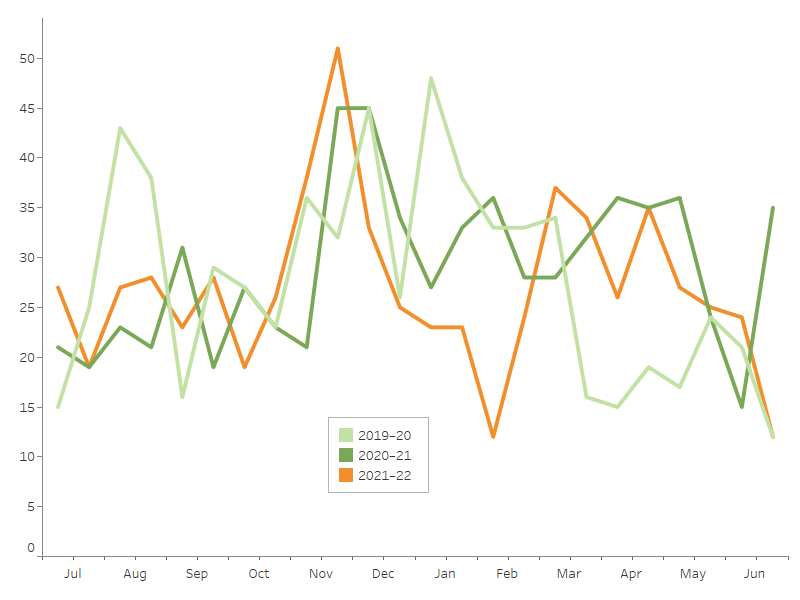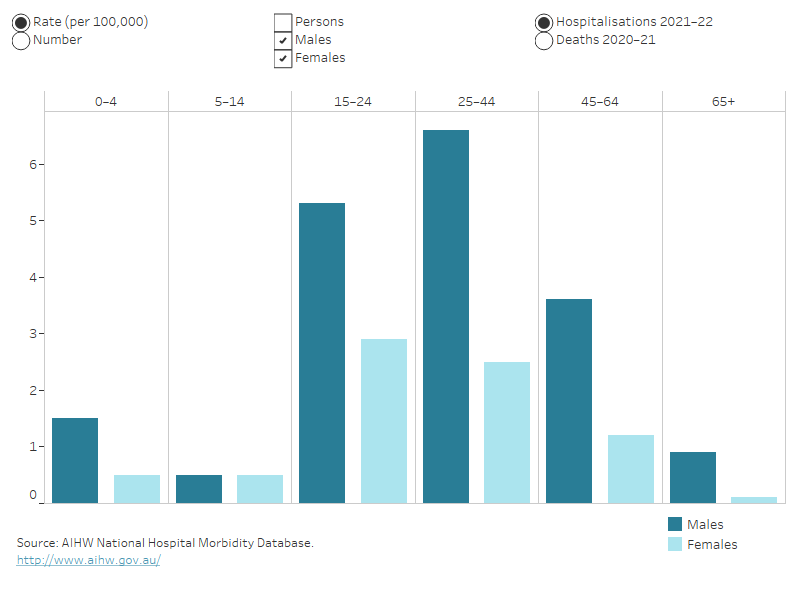Electricity and air pressure
Citation
AIHW
Australian Institute of Health and Welfare (2023) Electricity and air pressure, AIHW, Australian Government, accessed 19 April 2024.
APA
Australian Institute of Health and Welfare. (2023). Electricity and air pressure. Retrieved from https://pp.aihw.gov.au/reports/injury/electricity-and-air-pressure
MLA
Electricity and air pressure. Australian Institute of Health and Welfare, 06 July 2023, https://pp.aihw.gov.au/reports/injury/electricity-and-air-pressure
Vancouver
Australian Institute of Health and Welfare. Electricity and air pressure [Internet]. Canberra: Australian Institute of Health and Welfare, 2023 [cited 2024 Apr. 19]. Available from: https://pp.aihw.gov.au/reports/injury/electricity-and-air-pressure
Harvard
Australian Institute of Health and Welfare (AIHW) 2023, Electricity and air pressure, viewed 19 April 2024, https://pp.aihw.gov.au/reports/injury/electricity-and-air-pressure



 660 hospitalisations in 2021–22
660 hospitalisations in 2021–22 22 deaths in 2020–21
22 deaths in 2020–21
